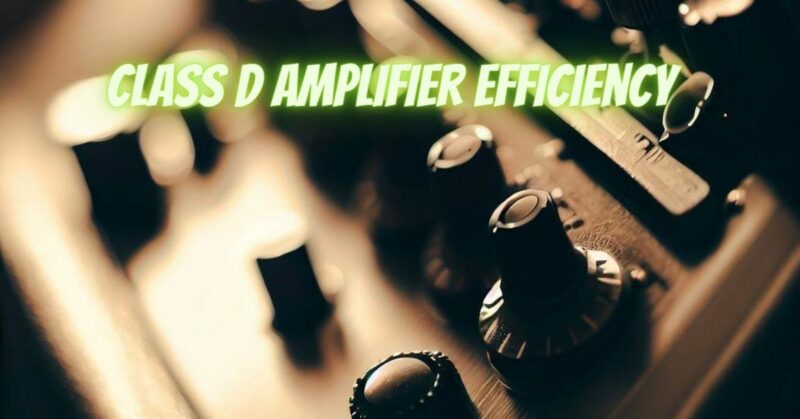Class D amplifiers have gained significant popularity in recent years due to their high efficiency and compact design. In this article, we will delve into the concept of Class D amplifier efficiency, discussing its characteristics, advantages, and considerations.
Efficiency in Class D Amplifiers:
Class D amplifiers, also known as switching amplifiers, utilize a digital switching technique to amplify the audio signal. Unlike traditional linear amplifiers, Class D amplifiers rapidly switch the power devices between fully on and fully off states, minimizing power dissipation and maximizing efficiency.
The key to the high efficiency of Class D amplifiers lies in their ability to operate in a binary mode, where the power devices are either fully conducting or not conducting at all. This results in minimal power loss as the devices spend little time in the active region, reducing heat generation and energy wastage.
Advantages of Class D Amplifiers:
- High Efficiency: Class D amplifiers are renowned for their exceptional efficiency. They can achieve efficiencies of up to 90% or higher, making them significantly more efficient than other amplifier classes. This high efficiency translates into reduced power consumption and less heat dissipation.
- Compact Design: Class D amplifiers’ switching nature allows for a compact design compared to linear amplifiers, which require larger heat sinks for heat dissipation. The compact size makes Class D amplifiers ideal for portable and space-constrained applications.
- Wide Frequency Response: Class D amplifiers can handle a wide frequency range, making them suitable for audio applications. With advancements in technology, modern Class D amplifiers can reproduce audio signals accurately across the audible frequency spectrum.
Considerations and Limitations:
- Output Filtering: Class D amplifiers require an output filter to remove the high-frequency switching components and reconstruct the amplified audio signal. The design and quality of the output filter can impact the overall audio performance and efficiency of the amplifier.
- Distortion and Noise: While Class D amplifiers can achieve high efficiency, they may introduce some distortion and noise due to the switching operation. However, advancements in design and implementation have significantly reduced these issues, allowing for high-quality audio reproduction.
- Electromagnetic Interference (EMI): The rapid switching of the power devices in Class D amplifiers can generate electromagnetic interference. Proper design and shielding techniques are necessary to minimize EMI and ensure compliance with electromagnetic compatibility (EMC) standards.
Conclusion:
Class D amplifiers offer exceptional efficiency and compact design, making them an attractive choice for various applications. Their ability to rapidly switch power devices results in minimal power dissipation and reduced heat generation. The high efficiency of Class D amplifiers enables longer battery life in portable devices and reduces energy consumption in larger audio systems.
When considering the use of Class D amplifiers, it is important to consider the specific requirements of your application, including output filtering, audio performance, and EMI considerations. By understanding the efficiency characteristics and limitations of Class D amplifiers, you can make informed decisions when selecting the most suitable amplifier topology for your audio needs.


